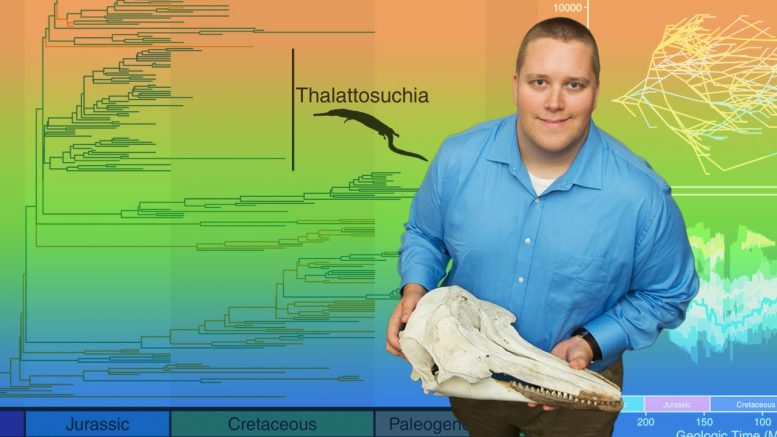
Nebraska’s Will Gearty holds the skull of a porpoise, whose torpedo-like body resembles those of ancient crocodiles that spent their entire lives in the water. Gearty’s research suggests that fully aquatic species got larger not because water released them from the constraints of land — as longstanding theories have proposed — but instead to insulate themselves against water’s lower temperatures and its capacity to steal body heat. Credit: Steve Castillo / Evolution: International Journal of Organic Evolution / Scott Schrage
Study pinpoints minimum survivable size of Jurassic crocodiles.
Taking the evolutionary plunge into water and abandoning land for good, as some crocodilian ancestors did nearly 200 million years ago, is often framed as choosing freedom: from gravity, from territorial boundaries, from dietary constraints.
Water might inflict more pressure in the pounds-per-square-inch sense, the thinking went, but it also probably relieved some — especially the sort that kept crocs from going up a size or 10. If they wanted to enjoy the considerable spoils of considerable size, water seemed the easy way.
A recent study from the University of Nebraska-Lincoln’s Will Gearty, who compiled a database of 264 species stretching back to the Triassic Period, says that freedom was actually compulsion in disguise.
After analyzing the database of crocodyliforms — a lineage of crocodile-like species that share a common ancestor — Gearty found that the average weights of aquatic crocodyliforms did easily surpass their semi-aquatic and landlocked counterparts, sometimes by a factor of 100.
But the study suggests that this disparity represented a response to, not a release from, the pressures of natural selection. Rather than expanding the range of crocodyliform body sizes, as some longstanding theories would predict, taking to the water instead seemed to compress that range by raising the minimum size threshold needed to survive its depths. The maximum size of those aquatic species, by contrast, barely budged over time.
And when Gearty derived a set of equations to estimate the largest feasible body sizes under aquatic, semi-aquatic, and terrestrial conditions?
“All three habitats had roughly the same upper limit (on size),” he said. “So even though it seems like you’re released from this pressure, you’re actually squeezed into an even smaller box than before.”
Two major factors — lung capacity and body heat — seem to have helped initiate the squeeze play. Prior research had proposed that aquatic crocodyliforms got big in part because they needed to dive deeply for food, including the choice of prey that would sustain a larger size. Upon digging into the literature, though, Gearty learned that lung volume increases more or less in lockstep with body size.
“So you actually don’t have much excess lung volume to spare,” said Gearty, a postdoctoral researcher in biological sciences. “When you get bigger, (lung capacity) is just basically scaling up with your body size to accommodate that extra size. The amount of time you could stay underwater increases a little bit, but not that much.”
At larger sizes, the evolutionary tradeoff between the benefits of longer, deeper dives and the energy demands of finding more food probably also reached a stalemate, he said, that helped cement the aquatic ceiling on size.
As for the higher floor? That’s where the thermal conductivity of water cranked up the evolutionary heat, Gearty said. Unfortunately for the aquatic crocs, water steals heat far faster than air does. The issue was likely compounded by the fact that temperatures in the waters they occupied were lower than the air temperatures enjoyed by their land-dwelling counterparts.
That would have left smaller aquatic crocodyliforms with only bad options: limit the duration and depth of their dives so that they could regularly return to the surface and warm themselves in the sun, or risk freezing to death during deeper hunts for food. Whether by starvation or hypothermia, either would eventually spell doom.
“The easiest way to counteract that is to get bigger,” Gearty said.
Getting bigger was especially appealing because the volume of body tissue, which generates heat, increases faster than the surface area of the skin that surrenders it. But the unforgiving consequences of heat loss still limited the pool of ancestors from which aquatic crocodyliforms could evolve.
“They actually needed to start at a larger size,” Gearty said. “So it’s not like a marine crocodile could have just evolved from anywhere. It had to be evolving from some non-marine crocodile that was already a little larger than normal.”
The fossil records of the crocodyliforms allowed Gearty and Jonathan Payne, his former doctoral adviser at Stanford University, to pinpoint the minimum weight threshold for aquatic survival: 10 kilograms, or about 22 pounds. And when they plotted the relationships of heat loss and lung capacity to body mass, they discovered that the two slopes crossed at almost exactly the same value: 10 kilograms.
“We were able to explain, with these physiological equations, exactly why there were no marine crocodiles below a certain size,” Gearty said. “This indicates that these very fundamental physiological constraints and controls … actually maybe some of the strongest forces for pushing animals to different body sizes through time. Not whether there’s an asteroid hitting the world, not whether you’re being (hunted) by some other animal — that just these physical and chemical properties of the world we live in are what drive this. And if you want to enter a new habitat, you need to conform to that new set of properties.”
The findings mostly reinforce a 2018 Gearty-led study that found similar trends among nearly 7,000 living and extinct mammal species. An elementary difference between mammals and reptiles, though, initially left the verdict in doubt.
“The whole (premise) of the marine mammal project was that these things are warm-blooded, and they have to keep their temperature up,” Gearty said. “They have to really worry about this heat loss. So the idea was, ‘Well, would the same constraint occur in cold-blooded organisms that are also living in the ocean?’
“There have been a couple of papers suggesting that some of these marine crocodiles may have been somewhat warm-blooded, and so they may have been able to kind of reheat their own bodies. But even if that’s the case, they were still going to be losing heat like these marine mammals would. They were still constrained by these thermoregulatory controls.”
Greyhounds and Dolphins
With the help of an undergraduate student at Stanford and funding from the National Science Foundation, Gearty spent most of the summer of 2017 tracking down the fossil records that informed the new study.
“But that was to find the stuff that’s readily available online,” he said. “Then you’ve got, you know, undocumented books that you need to find, and they have to get shipped from Europe or somewhere. So there were a lot of these one-offs. I was still measuring specimen photos and getting records up until I submitted the paper in the middle of last year.”
Gearty said he was mostly spared the time and expense of traveling to museums and physically measuring fossil dimensions, as some of his colleagues have in the name of their own research. But the haphazardness of some older classifications and documentation still had him following false leads and trying to make sense of the nonsensible.
“A lot of the crocodiles that people have described in papers have never actually been documented the way they’re supposed to be,” he said. “Someone might say, ‘Here’s the Nebraska crocodile.’ It’s just a colloquial name. And you’ll be like, ‘I guess I’ve got to go find the Nebraska crocodile.’ You look this up, and you see that there’s this crocodile from Nebraska, and this one, and this one. You don’t know which one is the ‘Nebraska crocodile.’
“You need to follow this trail of breadcrumbs, sometimes, to find these papers that may or may not have ever been published on these crocodiles that may or may not have ever been found. Fortunately, I was able to get most of the specimens just from the literature. But it did take a lot of digging to find the last probably 10% of the crocodiles.”
Many of the terrestrial fossils, in particular, trace body shapes that barely resemble the low-slung profile of the modern crocodile.
“The example I like to give is: Imagine a greyhound, and then put a crocodile skull on it,” Gearty said. “There were things like that running around on land probably 200 million years ago.”
Though their maximum size remained almost constant, marine species did evolve two to three times faster than the semi-aquatic and terrestrial groups, Gearty found. Along with increasing the size of smaller aquatic species, natural selection molded body forms to surmount the challenges presented by water. Scales, plates, and other drag-increasing skin deposits disappeared. Heads and tails flattened. Snouts narrowed.
“All of these were probably more dolphin-like than modern crocodiles, with even longer, thinner tails,” he said. “And some of them had very paddle-like feet, almost like flippers.”
Despite the fact that virtually all modern crocodile species are semi-aquatic, Gearty said those adaptations served the aquatic crocodyliforms well — more than 100 million years before mammals ventured into the deep.
“No one has talked about it much, but really, these things were quite successful,” he said. “And some of them weren’t even fazed by some of the big, (cataclysmic) events. When the asteroid hit that killed all the dinosaurs, one of the marine groups just kind of kept going like nothing happened. A lot of the terrestrial species went extinct, but this group just kept ticking along for a long time.”



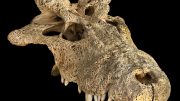

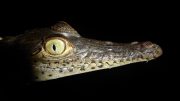
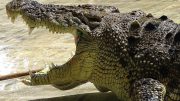
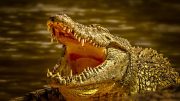
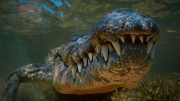
Be the first to comment on "Aquatic Jurassic Crocodiles Evolved, Enlarged to Avoid Freezing"